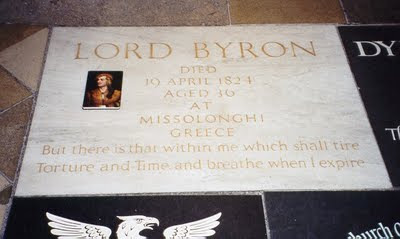Hello Bishop. This is the first time I'm blogging here. I just want to ask if you ever read the revelations of Saint Birgitta. If so, what is your opinion of them? - Ruben

"There are now three kinds of people among Christians as symbolised by the Hebrews. There are some who really believe in God and in My words. There are others who believe in God but lack confidence in My words, because they do not know how to distinguish between a good and a bad spirit. The third are those who neither believe in Me nor in you to whom I have spoken my words."
.
The above extract from St Birgitta's revelations is easy to understand and accept, albeit superfluous I feel to what already exists in Holy Scripture. My view of her many revelations is, like the revelations of various other religious, they are difficult to form opinions about beyond the fact that they seem to have a relevance today despite having been made centuries ago.
.
Birgitta Birgersdotter (circa 1303 – 23 July 1373) is the most celebrated saint of Sweden. She was the daughter of Birger Persson of the family of Finsta, governor of Uppland, and one of the richest landowners of the country, and his wife who was a member of the Folkunga family. Through her mother, young Birgitta was a relation of the Swedish kings of her lifetime. St Ingrid, whose death had occurred about twenty years before Birgitta's birth, was a near relative of the family. Birger's daughter received a careful religious training, and from her seventh year showed signs of extraordinary religious impressions and illuminations.
.
In 1316, at the age of thirteen, she was united in marriage to Ulf Gudmarsson, who was then eighteen. She acquired great influence over her noble and pious husband, and the happy marriage was blessed with eight children, among them St Catherine of Sweden. The saintly life and the great charity of Birgitta soon made her name known far and wide. She was acquainted with several learned and pious theologians, among them Nicolaus Hermanni, later Bishop of Linköping, Matthias, canon of Linköping, her confessor, Peter, Prior of Alvastrâ, and Peter Magister, her confessor after Matthias. She was later at the court of King Magnus Eriksson, over whom she gradually acquired great influence. Early in the forties (1341 – 1343) in company with her husband she made a pilgrimage to Santiago de Compostella. On the return journey her husband was stricken with an attack of illness, but recovered sufficiently to finish the journey. Shortly afterwards, however, he died (1344) in the Cistercian monastery of Alvastrâ in East Gothland.
Birgitta now devoted herself entirely to practices of religion and asceticism, and to religious undertakings. The visions which she believed herself to have had from her early childhood now became more frequent and definite. She believed that Christ Himself appeared to her, and she wrote down the revelations she then received, which were in great repute during the Middle Ages. They were translated into Latin by Matthias Magister and Prior Peter.
.
St Birgitta now founded a new religious congregation, the Brigittines, or Order of St Saviour, whose chief monastery, at Vadstena, was richly endowed by King Magnus and his queen (1346). To obtain confirmation for her institute, and at the same time to seek a larger sphere of activity for her mission, which was the moral uplifting of the period, she journeyed to Rome in 1349, and remained there until her death, except while absent on pilgrimages, among them one to the Holy Land in 1373. In August, 1370, Pope Urban V confirmed the Rule of her congregation. Birgitta made earnest representations to Pope Urban, urging the removal of the Holy See from Avignon back to Rome. She accomplished the greatest good in Rome, however, by her pious and charitable life, and her earnest admonitions to others to adopt a better life, following out the excellent precedents she had set in her native land. The year following her death her remains were conveyed to the monastery at Vadstena. She was canonised on 7 October, 1391 by Boniface IX, and confirmed by the Council of Constance in 1415.
In 1999 Pope John Paul II named St Birgitta as a patron saint of Europe. Her feast day is celebrated on July 23rd, the day of her death. Her feast was not in the Tridentine Calendar, but was later inserted in the Roman Catholic calendar of saints in 1623 for celebration on October 7th, the day she was canonised by Pope Boniface IX. Five years later, her feast was moved to October 8th, where it remained until the revision of the Roman Catholic Calendar of Saints in 1969. Traditionalists continue to use the earlier calendars.
In 1999 Pope John Paul II named St Birgitta as a patron saint of Europe. Her feast day is celebrated on July 23rd, the day of her death. Her feast was not in the Tridentine Calendar, but was later inserted in the Roman Catholic calendar of saints in 1623 for celebration on October 7th, the day she was canonised by Pope Boniface IX. Five years later, her feast was moved to October 8th, where it remained until the revision of the Roman Catholic Calendar of Saints in 1969. Traditionalists continue to use the earlier calendars.
.





